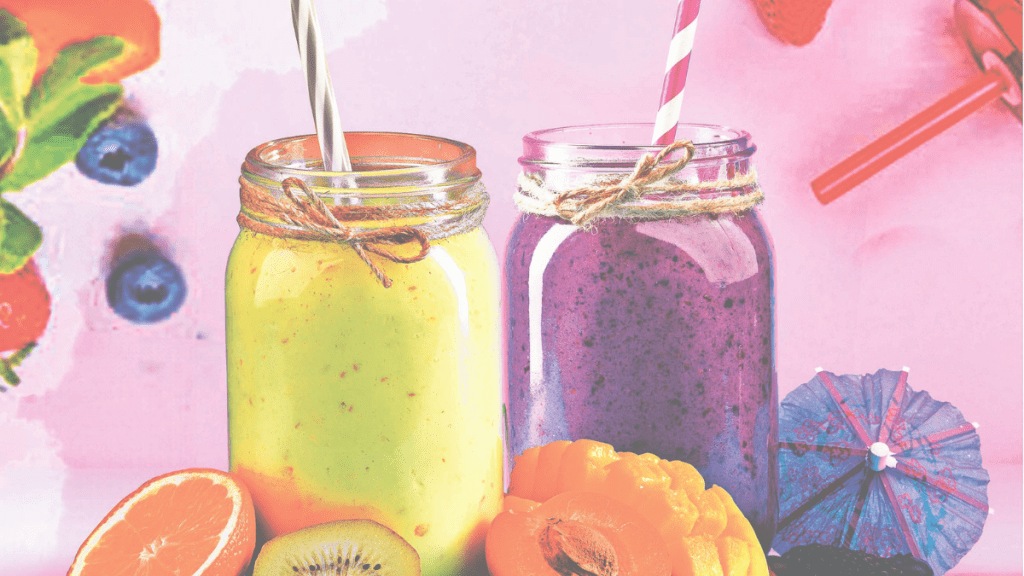Smoothies have become a popular go-to drink— whether it’s for breakfast, as a healthy weight management option, or to simply satisfy your hunger pangs. The creamy, non-alcoholic and thick-textured blended beverage packs a powerful punch of fruit pulp, juice, ice, yoghurt and/or milk. While they are good in nutritional value, depending on the ingredients used, the wrong combinations can sometimes make them toxic or take away the essence of the drink. Here, we get experts to recommend how smoothies can become a wholesome meal, even super healthy.
Good to go
An ingredient-rich smoothie made by mixing fruits or vegetables can have many health benefits. “Fruits and vegetables are not only rich in colour, they also contain essential nutrients such as vitamins and minerals needed to build tissues like skin and bones. Fruits and vegetables are composed of water and contain some of the minerals needed to rehydrate. Proteins can be obtained in a smoothie in several ways, by including dairy, peanut and other nut butters, whole nuts, seeds, legumes, and protein powders or supplements,” says Dr Deepti Khatuja, head clinical nutritionist, Fortis Memorial Research Institute, Gurugram.
Some ingredients can make smoothies super healthy. Flax seeds are a good source of omega 3 fatty acids. Lignans and alpha linoleic acid that are present in flax seeds help in building immunity. Oats are a good source of soluble fibres and rich in beta glucans, which help in reducing blood cholesterol. While natural spices like cinnamon, pepper, nutmeg and ginger can add zing, curd can provide flavour and improve gut health as it is a natural source of probiotics (gut-healthy bacteria), easy to digest, and a very good source of protein and calcium.
“Smoothies made from curd can be given in gut issues like Crohn’s diseases or lactose intolerant individuals,” says Khatuja.
Best to avoid
There are certain harmful combinations that reduce the healthy quotient in a smoothie. Suvarna Sawant, chief dietician, HOD, clinical nutrition & dietetics, Nanavati Max Super Speciality Hospital, Mumbai says, “While spinach, beetroot, and bananas are highly nutritious, combining spinach and beets in one drink may not be ideal due to their high oxalate content, which could interfere with calcium absorption.
Combining them with bananas may result in a smoothie that’s too high in sugar and cause a blood sugar spike.”
According to Dr Khatuja, smoothies when consumed in excess can have negative health consequences. “High sugar content in smoothies is a concern (as additional sweeteners like ice creams, sweetened yoghurts or honey or sugars are added), which can contribute to development of dental caries (cavities), tooth erosion, and obesity. Fruit contains high amounts of natural sugars and acid which can erode away the enamel of teeth if they come in contact frequently. Another concern is that smoothies may contribute to obesity as liquid (or semi-liquid) foods do not satisfy hunger and appetite, as long as solid food. Hence by drinking calories rather than eating them, more calories are consumed in order to satisfy hunger. So, smoothies should be consumed in moderation and not in excess,” says Khatuja.
While a growing trend of consuming this drink as a cleanser (to remove toxins from the body, allowing for more adequate absorption of nutrients and thus promoting weight loss) such as the ‘green smoothie’ cleanse is another health concern, Khatuja says a cleansing drink can lead to the extremely low amount of energy consumed (usually 1,000 calories) and lead to deficiencies in essential nutrients.
Some smoothie combinations to be avoided are ingredients bought off-shelf. Use fresh fruits, vegetables or nuts rather than dried or processed or non-seasonal fruits and vegetables as due to unseasonal storage a lot of nutrients are lost and processed and packaged fruits are loaded with preservatives. “Use fresh fruits instead of packed juices as packed juices are added with sugars which can impact the blood sugars and lead to obesity. Avoid addition of fats in the form of butter, etc, and high fat dairy products. For healthy fats, use nuts and seeds,” says Khatuja.
The right mix
A good combination includes using fruits like bananas as a primary ingredient, complemented by other fruits such as apples, mangoes, berries, or papaya, along with leafy greens like spinach, mint, coriander, kale, or even betel leaves. This pairing creates a smooth texture and provides a well-balanced mix of nutrients. “Over-ripe bananas not only add natural sweetness but also enhance the creaminess, effectively masking the bitterness of greens. Similarly, combining berries with greens works well, providing a rich source of antioxidants without overpowering the flavour,” adds Bengaluru-based nutritionist and lifestyle coach Nidhi Nahata.
The bad combinations should be avoided for optimal digestion. Fruits like watermelon or musk melon, which have a high water content, should not be mixed with other ingredients. These fruits digest rapidly, much faster than other smoothie components, leading to digestive discomfort and bloating.
“Poor combinations may strain the digestive system, potentially leading to chronic issues like irritable bowel syndrome (IBS). Well-chosen combinations enhance nutrient absorption, optimise digestion, and provide a quick, efficient energy source. This not only boosts immunity but also supports overall health,” adds Nahata.
Blending the ingredients in a certain way is crucial, says Narendra Shetty, chief wellness officer, Kshemavana, Yoga and Naturopathy Centre in Bengaluru. “To leverage on the nutrients, some fruits and vegetables can be grouped together in a way where they support each other and other times it is a nutritional disaster,” says Shetty, who recommends to take vitamin C containing foods such as oranges, strawberries, kiwi with foods containing iron such as spinach, lentils or tofu.
“Vitamin C is a reducing agent and it helps in the reduction of iron from its insoluble form, the ferric form to the soluble form, the ferrous form which is easily absorbed in the body. But protein sources such as Greek yoghurt or nuts should be taken together with fibre sources such as fruits, vegetables, or chia seeds to enhance satiety and stabilise blood sugar. This combination can be especially helpful for those who are struggling with weight or diabetes,” says Shetty.
What’s important to note is not to consume calcium and oxalate together as this increases the chances of forming kidney stones and this is found in spinach, rhubarb or chocolate.
“Oxalate can bind with calcium to form calcium oxalate crystals that can also contribute to stone formation. Eating too many potassium-containing foods such as bananas, avocados or spinach together with foods high in sodium such as processed meats or salty snacks raises blood pressure and puts pressure on the kidneys,” adds Shetty.
For a balanced diet, it is ideal to incorporate a reasonable portion of macronutrient in the smoothie as it makes for a more lasting energy and avoids the rush of what might otherwise be a sugar high.
For example, to get a balanced smoothie one can put a scoop of protein, source a handful of nuts or seeds and serve it with fruit. “If a person is lactose intolerant, it is recommended to use almond milk, oat milk and others. Keep in mind to achieve a slightly coarse structure of a smoothie, to prevent the destruction of the structures, particularly the fibres of fruits and vegetables,” adds Shetty.
Nutrients greatly influence the benefits one can derive from a smoothie. “The science of combining foods lies in ensuring that macronutrients like carbohydrates, fats, and proteins are balanced, along with vitamins and minerals. Poor combinations-like too much sugar or an imbalance in macronutrients-can cause spikes in blood sugar, poor digestion, and nutrient malabsorption. Over time, this can contribute to metabolic conditions like insulin resistance or gastrointestinal issues,” adds Suvarna.








